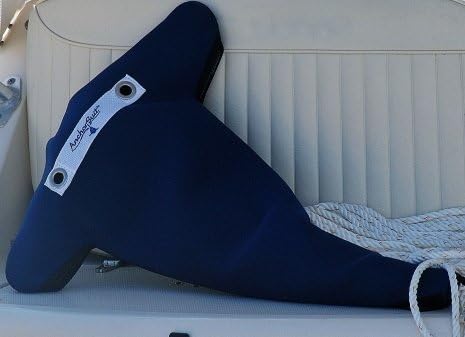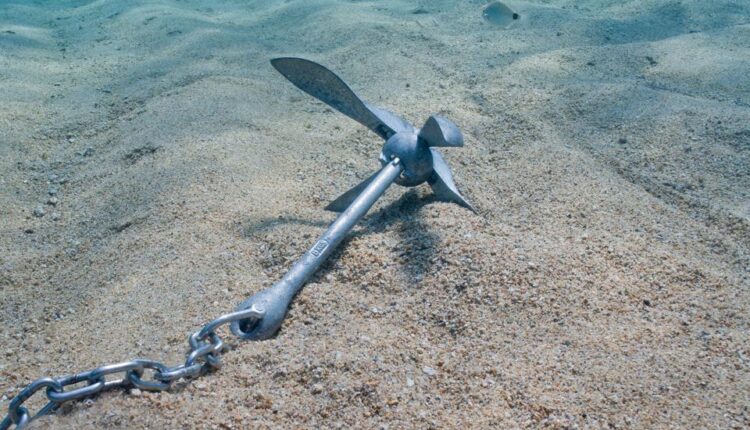The 3 Best Pontoon Anchors You’ll Ever Need
Anchoring appears to be easier than it is. Throwing over a brick fastened to the boat was enough to keep you from drifting when you were in a canoe. Anchoring must be done properly on a large pontoon boat that gathers waves and is driven by the wind, otherwise you may drift. You’ll need a solid anchor whether you’re beaching your pontoon at party island or out in deeper ocean seas.
Best Pontoon Anchors You’ll Ever Need
There is no such thing as a “one-size-fits-all” anchor, but you should be able to select one that performs well in the circumstances where you regularly boat and use it every time.
I conducted some research online and got a slew of various pontoon boat skipper suggestions. There are three that are well acclaimed, and one of them will undoubtedly be a good fit for the conditions in which you generally launch your toon. A good pontoon anchor winch is also useful in addition to the anchors themselves!
Option 1: To use a fluke anchor (By Fortress)

Works best in sand or gravel on the bottom
The arms of a fluke style anchor are designed to sink into the bottom and grab a grip, preventing your boat from drifting. They don’t have to be extremely hefty, which is a wonderful advantage. In fact, in calmer conditions, a 15-pound fluke type anchor can easily hold a huge 30′ pontoon boat, or even a 24′ pontoon boat.
Keep a few factors in mind while choosing a fluke type anchor. First and foremost, pick your fluke primarily on its size, with weight being a secondary factor. The weight merely helps to keep the boat afloat. Weight is only required to press the arms into the ground far enough to get a strong grip. If you’re sailing on muddy bottoms, you may not need as strong an anchor as if you’re sailing on sand, which requires more weight to push the arms into.
All anchors are not created equal. While a fluke type anchor is a very general device, not all of them work equally well. With that extra amount of holding force, the Fortress anchor appears to stick out even amid other fluke style anchors.
If you often stow your anchor behind your pontoon seats, consider purchasing this storage bag (available on Amazon).

Option 2: Box Anchor

It’s best used in muddy river/lake bottoms or areas with little vegetation.
If you’ll be largely in muck (lakes and rivers), a box anchor is the way to go. To acquire a firm grip, box anchors maximize the amount of surface area in contact with the mud.
It is critical to ensure that you have enough line out with all anchors, but especially with box anchors. If your line is too short, the arms will not have the ideal angle for digging into the ground, and you will not be able to get a good grasp. There should be 5 times as much line out as there is depth. If you’re in 20 feet of water, it means you’ll need 100 feet of rope.
If I had to choose only one anchor, it would be the box anchor mentioned above. It’s well-made and gets rave reviews.
Option 3: Grapnel Style Anchor

Works best on a rocky bottom.
A special anchor is required for rocky bottoms. Many boating scenarios, such as mud, sand, and vegetation, may discover that a single anchor may suffice in all of them. When it comes to rock bottoms, though, a grapnel type anchor is the way to go. On rock bottoms, some pontoon boat captains utilize a fluke style anchor with good results, while others say it doesn’t work at all.
The good news is that this sort of anchor is typically relatively affordable, and it folds up to take up considerably less room in the boat when not in use.
At least four enormous arms protrude from the grapnel anchor, grabbing a strong grip on the rock below. It may take a few feet of drift for a grapnel style anchor to find hold on a rock, but once it does, it’s arguably the most stable hold you’ll discover from any anchor.
Identifying the Risks of Anchoring
In the previous six years, three people in my home state of Idaho have perished while attempting to anchor a boat in two different events. A man’s leg was hooked around the anchor line in one of the cases, and the anchor was then hurled in, bringing him to the bottom and drowning him. A family in a small ship, on the other hand, put out an anchor line that was too short. The anchor, which hadn’t reached the bottom, swung the boat over and held it upside down.
According to the Tampa Bay Times, two NFL football players and a collegiate football player perished when their boat was incorrectly anchored. The anchor got trapped 120 feet below the surface and could not be retrieved. The gang tried hard to recover an anchor that had been lost the previous weekend and was unrecoverable. They chose to connect the anchor to the stern of the boat, which is dangerous because the stern is not as robust or as stable as the bow. They then proceeded to rev up the engine in the hopes of freeing the anchor, but anybody familiar with this sort of anchor knows that this would simply push it deeper into the ground. The 18-foot boat was flipped and the four boaters were left in 65-degree water as a result of the impact. Three of the guys perished of hypothermia and were lost at sea, despite wearing life jackets. Only one person made it out alive.
Another anchoring death was reported in 2013, when a man’s hand became trapped in an anchor chain as the anchor motor was engaged, pulling him down to his death.
Although anchoring is not inherently risky, occurrences like these demonstrate the need of exercising caution when boating. Take care when you’re out there.


Comments are closed.